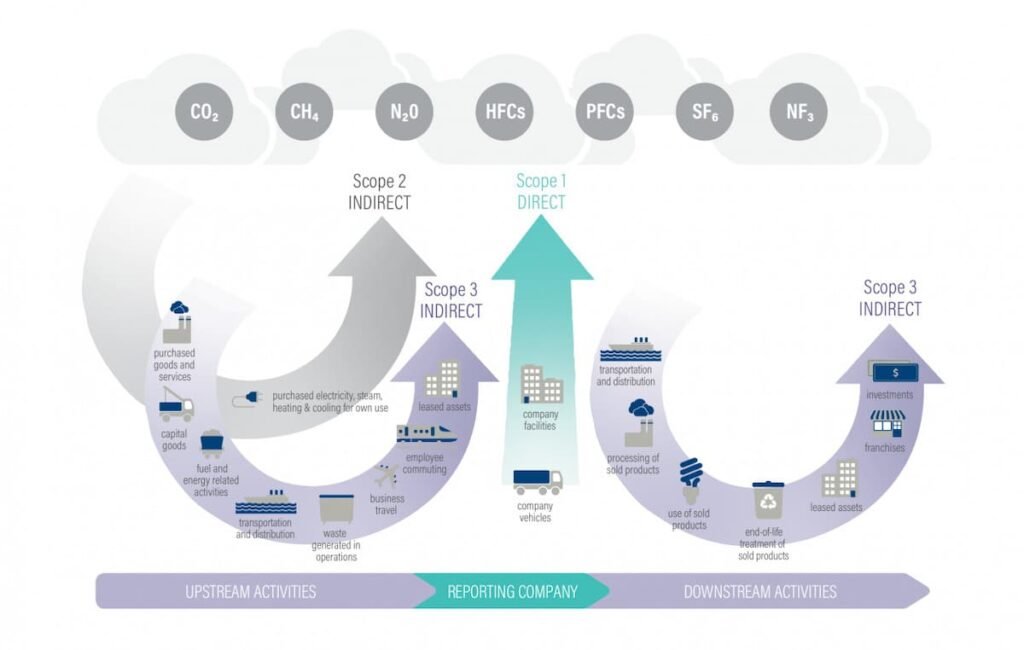Definition and Overview
Scope 3 emissions are indirect greenhouse gas (GHG) emissions that occur due to a company’s operations but originate from sources not owned or controlled by the company.These emissions are a consequence of activities in a company’s value chain, including upstream and downstream processes. According to the Greenhouse Gas Protocol, Scope 3 emissions can be categorized into 15 different categories, such as purchased goods and services, transportation and distribution, waste generated in operations, business travel, and employee commuting. In many cases, Scope 3 emissions represent the majority of a company’s total GHG emissions.

Impact on Climate Change
Addressing Scope 3 emissions is crucial in the fight against climate change, as they often make up a significant portion of a company’s carbon footprint. Reducing Scope 3 emissions can help slow down or reverse climate change by minimizing the overall GHG emissions associated with a company’s operations and value chain.
Reduction Strategies
Companies can implement various strategies to reduce their Scope 3 emissions. Some of these strategies include:
- Supply chain management: Engaging with suppliers to encourage them to reduce their own emissions and adopt sustainable practices.
- Material selection: Choosing materials or vendors with lower carbon footprints.
- Transportation decisions: Making informed choices about transportation and distribution methods to minimize emissions.
- Waste management: Implementing waste reduction and recycling initiatives to decrease emissions from waste generated in operations.
Case Studies
Several major companies have taken action to reduce their Scope 3 emissions. For example, Yale University has committed to achieving zero actual carbon emissions by 2050, with an interim goal to reach net-zero emissions by 2035. The university is working to gather data on its Scope 3 emissions and address this significant part of its campus footprint.
Reporting and Measurement
Measuring and reporting Scope 3 emissions can be challenging due to the complexity of value chains and the difficulty in obtaining accurate data. However, the Greenhouse Gas Protocol provides a Scope 3 Standard and calculation guidance to help companies account for and report their Scope 3 emissions. By measuring and reporting Scope 3 emissions, companies can identify opportunities for improvement, mitigate risks within their value chains, and respond to increasing pressure from investors, customers, and civil society.
More Information: circulartree.com